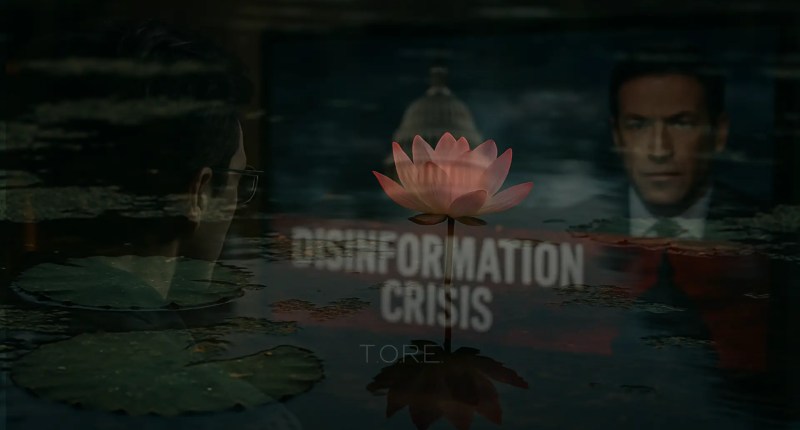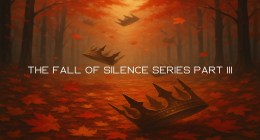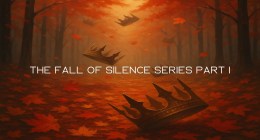Trust is earned. Consistency is key. Discernment is a virtue.
Judge them by their fruit.
In today’s political and media environment—where disinformation, gatekeeping, and manufactured narratives are standard—discernment isn’t just a virtue. It’s a weapon of survival.
Most people mistake cynicism for discernment. But discernment doesn’t reject everything—it weighs it.
Discernment is not skepticism.
Discernment is not suspicion.
Discernment is trained awareness with a moral compass.
We are living in an age not just of information—but of confusion. Profound, sustained, and meticulously curated confusion. In this time, certainty is heresy, and discernment is a dying art. The lines between truth and fiction, good and evil, expert and charlatan, are no longer blurred by accident. They are blurred by design.
It didn’t happen overnight. At first, we celebrated the floodgates opening—unfettered access to knowledge, connections across continents, the decentralization of expertise. But while we were busy applauding the “information age,” another force was already at work—one far more calculating. It wasn’t interested in spreading knowledge, but it was interested in scattering doubt.
Because in confusion, control thrives.
When everything is questionable, then nothing is reliable. When nothing is trustworthy, people stop acting. They watch. They wait. They become spectators in a world that demands their participation. The algorithmic noise replaces the human voice. The truth-teller looks like the lunatic. And the liar—well, the liar seems like your friend, your favorite celebrity, or your trusted institution.
But the most dangerous part of all this isn’t just the confusion. It’s that we’ve become comfortable with it.
We no longer expect clarity. We don’t demand wisdom. We’ve accepted that truth is relative, goodness is subjective, and that credibility comes from optics—not from fruit. People who once sought answers now only seek validation. Those who used to ask “Is it true?” now ask “Is it popular?” or worse, “Will I be attacked if I say this out loud?”
And so we retreat—into safe narratives, curated bubbles, and performative righteousness. But the retreat doesn’t make us safer. It makes us weaker. Because the confusion wasn’t meant to protect us, it was meant to fracture us. To keep us skeptical of each other, unsure of our instincts, and incapable of unified action.
Nowhere is this more evident than in how we treat those who attempt to do good.
We don’t examine the fruit—we don’t examine if they produce solutions, build things, or help people. Instead, we trace the roots. “Who funds them? Who are they connected to? Where did they work before?” We judge a voice not by what it says, but by whether it speaks from a familiar stage. And if it doesn’t—if the speaker emerges from somewhere inconvenient, messy, or unvetted—we shut them down. We whisper. We doubt. We dismiss.
This is how you kill movements before they begin. Not with bullets or bans. But with confusion. With whispers and reputational smears. With the slow erosion of trust and the elevation of performance over principle.
But here’s the truth most are afraid to say: Good people don’t always look polished. And good fruit doesn’t always grow in pretty places.
Sometimes it comes from swamps. From messy pasts. From names that don’t have the proper endorsements or friends in high places. And sometimes—often—it comes from people who’ve walked through darkness and know precisely what it looks like.
This isn’t just a cultural crisis. It’s a spiritual one.
And unless we learn how to see again—to look at the fruit, not the façade—we will keep failing. We will keep tearing down the very people who could help rebuild what’s been broken.
The Rise of Optics Over Substance
One of the most significant lies ever sold to the public is that perception is truth. It’s not. Perception is the most controlled domain of warfare, and it’s been weaponized so thoroughly that people have forgotten how to think, how to trust their instincts, and how to tell real from rehearsed.
We’re not in an age of fake news. That phrase—“The New York Times is fake news”—has become a punchline. An eye-roll. It lost all potency because people turned it into a meme. But here’s what’s real, and more dangerous:
The New York Times doesn’t produce fake news. It produces manufactured news. That distinction is vital. Fake is false. Manufactured is something else—it’s a deliberately constructed reality. It may include facts, but they’re arranged with surgical precision to create a specific emotional and intellectual outcome. And when you’ve worked in intelligence, like I have, you recognize the pattern instantly.
Let me give you an example from firsthand experience. I was staying at the Trump Hotel in New York this week. It seems the media is still fueling the narrative machine, trying to paint anyone associated with President Trump as either a brainwashed cultist or a greedy sycophant. Outside the hotel, students were stationed by the New York Times—yes, students—armed with clipboards and a particular line of questioning.
They weren’t there to investigate. They weren’t asking objective questions. They were fishing for a particular angle—trying to catch people off guard, frame them as unthinking supporters, guilt them for financially supporting Trump, and gather quotes that could be stitched into their manufactured tapestry. I watched them. I watched as they asked the same three questions to everyone, looking for the correct sound bite, the right look, the right words. It was profiling in reverse: not to understand, but to expose.
That’s not journalism. That’s a psychological operation.
And this is precisely how “credibility” is built today—not on the quality of one’s work, or the integrity of their message, but on how well they fit the pre-approved optics. Credentialed voices get boosted—even if they’re empty. Meanwhile, people doing real work, hard work, a good job, are ignored or attacked because they don’t come from the right background, or they said something that doesn’t align with the consensus.
Let’s talk psychology for a second. As a profiler, I can tell you this: humans crave certainty, especially in a chaotic world. And when they can’t find the truth, they look for signals. Who endorsed this person? What network platformed them? Are they standing next to the right flag? Are they blue-checked? Are they invited to the right parties?
These are the metrics now. Not integrity. Not impact. But optics.
Take the mainstream media’s treatment of doctors during COVID. If you wore a white coat and said what the CDC said, you were a “hero.” But if you had the same credentials—or better—and questioned the narrative, suddenly you were a “quack,” “misinformation agent,” or “danger to public health.” That’s not science. That’s show business.
The same applies in politics, in activism, and even in so-called “truth movements.” If you didn’t come from the right three-letter agency, or your résumé doesn’t fit the audience’s fantasy, you’re “suspect.” Doesn’t matter what you built. Doesn’t matter who you’ve helped. The question becomes: “Does your story match what I’ve been programmed to believe a ‘credible person’ looks and sounds like?”
Let me be blunt: if your goodness has to pass through a popularity filter before it’s accepted, it’s not goodness. It’s branding.
This entire system is addicted to the appearance of virtue, not its cost. Real virtue often costs—friends, jobs, comfort, reputation. Manufactured virtue gets you speaking gigs, book deals, and articles in The Atlantic.
People want proof someone is “safe” before they trust their work. But that instinct has been rewired by constant exposure to manufactured reputations. And the ones doing the real heavy lifting—former contractors, whistleblowers, off-grid reformers—get smeared not because they’re untrustworthy, but because they bypassed the approval machine.
This is how the public loses its discernment. You’re taught to trust image over substance, performance over product. And before you know it, you’re participating in the same psychological operation being run on you—tearing down people doing good, because they don’t “look” like what you were taught good looks like.
But fundamental transformation—the stuff that matters—rarely looks the part.
This is what “news” is now. Manufactured reality. Psychological theater disguised as information.
And it’s not just legacy media. The independent ecosystem has devolved into the same game. A carnival of reaction content where self-appointed influencers push sound bites and surface-level commentary as if it were journalism.
Take Brian Cates. He’s not a journalist. He’s not an investigator. He is, by every analytic measure, an opinion aggregator. He rides the coattails of real researchers, cherry-picks buzz, slaps on some rhetorical frosting, and dishes it out as original insight. The public eats it up—not because he breaks stories, but because he’s built proximity to larger names in the narrative machine. That’s it. He positions himself near the spotlight—and by osmosis, people assume substance.
However, here’s the profile breakdown: Cates is a technician in an echo chamber. His value isn’t in uncovering the truth. It’s in maintaining narrative momentum for a specific audience who craves validation, not verification.
That’s not journalism. That’s maintenance ops.
Or look at Matt Wallace—2.3 million followers. For what? For parroting crypto hype, mimicking others’ tweets, and shouting into a camera with zero informational density. I met him. No substance. He looks like a Norwegian cyclist but offers less than an empty water bottle. His entire persona is built on aesthetics: upbeat tone, rapid delivery, meme-style energy. No investigative acumen. No critical depth. Just vibes.
And yet, people listen. They retweet. They build trust around him because he looks the part. This is how optics have replaced discernment. Society doesn’t follow because of what you say. It follows because of how you appear when saying it. Even silence, if packaged correctly, trends.
This is the harvest of psychological warfare. The audience has been re-trained to respond to familiarity, association, and volume—not value.
The media space has become saturated with emotional anesthetics. These influencers don’t want you to act. They want you to feel like you’re acting by sharing something, clapping in the comments, or watching a 90-second clip with music. But there’s no movement. There’s no mobilization. It’s all simulated resistance.
That’s the point.
Manufactured media is not meant to inform you. It’s meant to pacify you. It’s not about delivering truth. It’s about creating the illusion of a functional press while keeping people in a state of engagement and paralysis.
And that’s why Brian Cates and Matt Wallace exist—not as outliers, but as models. They’re the ideal media psyop templates: emotional triggers, easy-to-digest talking points, and no threat to institutional power.
If this sounds like an operation, that’s because it is.
If we’re going to reclaim any semblance of clarity, we need to stop measuring credibility by popularity. We need to stop confusing repetition for research. We need to see through the packaging and ask: What has this person actually uncovered? Who have they helped? What fruit is on the table?
Currently, the public’s palate is conditioned to accept junk content disguised as gourmet. And unless we reset our appetite, we’ll keep starving for truth in a buffet of deception.
The Inversion of Good and Evil
We are at a point in history where doing the right thing makes you a target. Not because it’s wrong—but because it’s inconvenient. And that’s the inversion. That’s how the machine works. Goodness is filtered through popularity metrics. Truth is only allowed if it comes with the proper endorsements. And the people doing the heavy lifting get sidelined, blacklisted, or mocked—not for what they’ve done wrong, but for who they are or how they make the “brand” feel.
Let’s talk about Julian Assange.
He exposed war crimes. He published verified, unaltered primary source evidence. He didn’t ask permission from the right outlets or wear a press pass handed to him by the machine. He did the job. The real job. Journalism at its core: truth without compromise. And for that, he was labeled a cybercriminal, a national security threat, a rapist, a Russian asset, a destabilizer.
The truth? He was just inconvenient. And so they reversed the moral code: he was evil, not because of the damage he did, but because of the damage his truth did to the illusion of virtue in governments.
That inversion isn’t unique to Assange. It’s systemic. I’ve seen it firsthand.
Everyone who knows my work is aware that I’ve been involved in election integrity for a long time. Tina Peters has been at the core of that fight—and my support for her is not hidden, it’s unwavering. However, supporting someone who has been targeted can also make you a target. Even inside her camp, there are voices—spreading rumors, implying I can’t be trusted because of my “questionable intelligence background.”
Let’s get something straight. I do have an intelligence background. That’s not up for debate. The only “questionable” part is that I was never supposed to use it to help the people. And yet, I do. Over and over again. Quietly. Consistently. Unseen and unpaid, because the mission is real.
One attorney in particular—on her team- has gone around casting doubt on me, despite knowing I’ve done more for Tina behind the scenes than most of the clout-chasers surrounding her. These aren’t professionals. These are individuals who use popularity as a metric for credibility. They use emotional manipulation, projection, and whispered campaigns to gatekeep who gets to help. And in doing so, they sabotage the very justice they claim to fight for.
Let’s break that down: if your goal is restitution, clarity, and justice, why would you reject help from someone with the skills, knowledge, and loyalty to get it done?
The answer is simple because optics matter more than outcomes in a society governed by inversion.
When fruit is no longer the metric—when the illusion of status replaces substance—then help that doesn’t look the part is seen as a threat. And the insecure respond by flanking themselves with yes-men and credentialed figureheads, ignoring the very people doing the grunt work. That’s how movements rot from within.
You want to know why most of these truth movements fail? Why do the revelations get buried, the lawsuits stall, and the corruption continue?
Because they chose figureheads over fighters, they chased hashtags instead of tactics. They fell for Q-Shaman photo ops instead of operational plans. Because people no longer have the spiritual or intellectual discernment to recognize who’s actually bearing fruit and who’s just posing next to a tree.
And in that confusion, the enemy doesn’t need to destroy us. We destroy ourselves.
We do it every time we choose association over accuracy. Every time we dismiss someone for not being famous enough, polished enough, “cleared” enough. Every time we whisper rumors instead of measuring results. That’s the real war. The psychological operation isn’t just external—it’s internal. It’s among us. It is we who fail to question our own biases and idolatries.
Look—I don’t need applause. I don’t need validation. I need results. And like Assange, like so many before us who’ve walked through fire to shine a light, I’ve accepted that truth will rarely be welcome where lies are profitable.
But what I won’t accept is the continued sabotage of justice by those too scared, too insecure, or too complicit to recognize help when it walks through the door.
I will keep showing up. I will keep saving the day in the unseen realm. And the people who punish me for being unconventional, for bypassing their social contracts of power and gatekeeping, will answer—not to me—but to the very justice they claim to serve.
Because in the end, truth continuously collects its debts. Even if it does it in silence.
The Swamp and the Lotus: Where Good Fruit Grows
We have to stop pretending that truth only comes from clean places.
It doesn’t. It never has.
If you’re still looking for prophets in suits or whistleblowers with media polish, you’re blind to where the real work is happening. The lotus doesn’t grow on marble—it grows in mud. And the deeper the mud, the more profound the bloom. That’s where real good comes from: messy, complicated, bloodied places where no one’s taking selfies or getting invited to speaking gigs.
And you know who that truth terrifies? People who’ve built careers on performance instead of outcomes.
Let me give you an example. No one in the media wanted to touch—because there were no optics to exploit, only facts to face.
In 2015, I collaborated with the Office of the Inspector General at the Department of Health and Human Services to investigate corruption related to the Office of Refugee Resettlement (ORR) in North Dakota. The report came out—and it was damning. But what followed wasn’t headlines. It wasn’t an outcry. It was silent.
I distributed the findings to multiple agencies, detailing how the same 13 names appeared over and over in lists tied to the placement of unaccompanied minors arriving in Fargo, ND. These were supposed to be children placed into homes. But thousands were missing, and the numbers didn’t lie. The state was reporting $75,000/month for a single foster child—a figure that not only defies fiscal logic but screams exploitation. And yet, no one was held accountable.
Let me say that again: thousands of missing children. Documented. Audited. Verified. Zero consequences.
Around that same time, I approached a man named Josh Gallion, then running for State Auditor. I looked him in the eye and asked if he’d be willing to audit HHS in North Dakota based on the OIG report. Unlike most, he listened. He followed up. He conducted a full audit, and guess what? Everything I said was confirmed. The numbers matched. The fraud was real. The missing children were real. But no arrests came. No resignations. In fact, many of the key state law enforcement figures connected to this case either “died” mysteriously or allegedly committed suicide before ever facing charges.
That’s not a conspiracy theory. That’s a matter of record.
But despite all that, no one wanted to hear from me. Because I didn’t fit the mold. I wasn’t coming from an official agency. A federal title didn’t protect me. I was just the woman who kept showing up with the facts.
Then, years later, Tara Rodas comes out as a whistleblower—doing precisely what I had done years before, raising flags about unaccompanied minors, ORR corruption, and exploitation. And suddenly, she’s credible. Not because her story was different—it wasn’t. But because she had a title. Because she looked right. Because she was usable by the media.
And let me be clear: I support her. She’s in the fight. She’s risking it. I admire that. But why was my data—my OIG report, my audit documentation, my firsthand analysis—ignored until someone with a better resume repeated it?
That’s the inversion.
We don’t judge truth by the evidence. We judge it by the appearance of the messenger.
This is precisely how society fails the most vulnerable—because we’ve trained ourselves to trust only those who look safe, not those who bring proof. We’ve created a public square where truth must come from a cocktail party or it doesn’t count.
Let me elaborate: I tracked NGO movements during the influx of caravans. I monitored how “nonprofits” were moving unaccompanied minors across state lines. I flagged properties in Tennessee that were supposedly housing these kids—only to find they were empty, or being sued for unpaid rent by the very landlords who never saw a single child appear.
Where did the kids go?
That’s journalism. That’s an investigation. You don’t need a press pass to do it. You need receipts. I had them.
But instead of following the paper trail, what do the media focus on? Popularity. Pictures. Engagement stats. They turn the journalism world into a high school cafeteria, where only the cool kids get heard, and truth is relegated to the corner, unnoticed by anyone.
This is how the swamp works. It buries truth in mud and waits to see if anyone has the guts to pull it out. I did. And I still do.
However, until we stop conflating credibility with credentials and start recognizing substance over flash, this cycle will continue. Over and over. Whistleblowers like me will be overlooked. Real audits will be ignored. And children—real, living children—will continue to disappear into systems that profit from their absence.
It’s not just heartbreaking. It’s criminal.
So, again I say: Look at the fruit, not the face, not the feed, not the filtered biography. Look at the fruit.
Because the lotus is still blooming, but no one’s looking in the mud anymore.
Discernment in an Age of Distortion
Let’s be honest: we’ve lost the ability to discern.
In a world saturated with narratives, manipulated imagery, credentialed cowards, and mouthpieces parading as messengers—we have been trained not to judge, but to perform approval. Our discernment is shot. We don’t follow truth. We follow trends. We trust media-crafted optics more than lived reality. And that’s not a glitch in the system. That is the system.
So the question is: How do we see again?
First, we must acknowledge that we’ve been psychologically rewired. This isn’t just a social problem—it’s a neural one. People have been conditioned by platforms and pundits to respond to repetition over reason, to mistake emotional triggers for facts, and to default to fear-based heuristics instead of logic. And when discernment dies, tyranny gets a blank check.
Let me put this in psychological terms: in the absence of certainty, the brain seeks familiarity. That’s why people accept talking heads on Fox or MSNBC as truth-tellers. It’s not about what they’re saying—it’s about how they make you feel. Safe. Seen. Informed. But you’re not informed. You’re being handled.
Discernment is not suspicion. It’s not paranoia. It’s not vibes. Discernment is pattern recognition backed by principle. It’s the ability to analyze fruit—not foliage. It’s checking the receipts instead of worshiping the résumé.
Let me give you a real-world comparison. A flashy nonprofit says they rescued 800 children from trafficking. Great. Where are the names? Where are the locations? Where is the paperwork? What judges signed those releases? What programs took them in? If you can’t trace that, then what you have is a campaign, not a cause. But if a lesser-known woman walks in with documentation from the OIG, time-stamped emails, state audits, maps of facilities, and legal affidavits—and you ignore her because she doesn’t have a press secretary? You’ve failed the moral test.
That’s how society has operated for the last decade. And that’s how people like me get sidelined.
Discernment today has been replaced by filtering through emotion, identity, and affiliation. You’ve been taught to ask:
- “Do I like her?” instead of “Is she right?”
- “Is he credentialed?” instead of “Has he produced results?”
- “Is this too fringe?” instead of “Is this verifiable?”
Truth doesn’t need a sponsor. It just needs to be seen.
And let’s be clear: this isn’t just about public figures. This is about you, the reader. You are responsible for what you accept. And if you’re still judging the value of a truth by who else co-signs it, then you’re not thinking—you’re outsourcing.
So what do we do?
We reforge discernment.
Here is how :
- Judge by fruit. Not by affiliations. Not by stage presence. Not by slick production. What has the person done? What are the outcomes? Where is the impact?
- Follow documentation, not declarations. If someone claims to expose something but has no names, no files, no timestamps, no direct evidence—they’re performing.
- Check your bias toward popularity. Ask yourself if you’d still trust the information if it came from someone unpopular or “unpolished.” If not, that’s your conditioning showing.
- Start slow, trusting again. Truth doesn’t demand instant belief. But it does deserve space to be evaluated. Hold space for the inconvenient, the uncredentialed, the uncomfortable.
- Reclaim humility. Sometimes the best teachers are the ones you were told not to trust. Be brave enough to say, “I was wrong.” That is where discernment begins.
You want discernment? It starts with courage. The courage to stop asking who said it—and start asking Is it true?
The courage to admit you’ve been fooled before, and to still stay open.
The courage to question the narratives that feed your ego and make you feel innovative, safe, and superior—because those are the most dangerous lies of all.
You want a movement that wins? Stop building it out of followers and start building it out of fruit-checkers. People who don’t care about stage lights or blue checks or agency titles—but care about truth, regardless of who brings it.
The greatest threat to evil is not exposure. It’s discernment.
Because exposure fades, but discernment—when practiced, when rooted in conviction, not performance—prevents the lie from ever taking root in the first place.
Rebuilding Trust, One Fruit at a Time
We are not here by accident.
We are here—confused, paralyzed, divided—because perception has been weaponized, truth has been rebranded, and trust has been outsourced to people who sell access, not answers.
The war we’re in isn’t just political. It’s moral. It’s spiritual. It’s about judgment—not the kind that punishes, but the kind that protects. The type that evaluates, discerns, and builds alliances based on fruit, not favor.
Over the past decade, I’ve watched this war unfold from every angle—through data, through operations, through conversations no one will ever read transcripts for. And if there’s one thing I know for sure, it’s this:
Good people will continue to be destroyed—not because they failed—but because the people they served unable to recognize them.
That is the curse of a society addicted to optics.
It’s how Assange ended up in a prison cell.
It’s how whistleblowers like Tara Rodas were applauded while those who laid the groundwork were dismissed.
It’s how children went missing in North Dakota, and no one cared until someone “acceptable” repeated the report.
It’s how the truth movement got hijacked by influencers, reaction merchants, and people who couldn’t hold a classified document if it was handed to them in a manila envelope.
And that’s why you, the reader, have a choice.
You can keep following voices because of how they look, how they sound, or who they stand next to.
Alternatively, you can begin the work.
That work isn’t glamorous. It’s not viral. But it’s holy.
It starts with looking deeper.
It starts with asking better questions.
It starts with judging the fruit, even if you’ve never seen a tree like that before.
Discernment is the mother of all virtues in a time of confusion.
Tore Maras

If you like my work, you can tip or support me via TIP ME or subscribe to me on Subscribestar! You can also follow and subscribe to me on Rumble and Locals or subscribe to my Substack. I am 100% people-funded. www.toresays.com
Digital Dominion Series is now on Amazon: VOLUME I, VOLUME II, and Volume III – and Pre-order for Digital Dominion Volume IV is now on sale.






